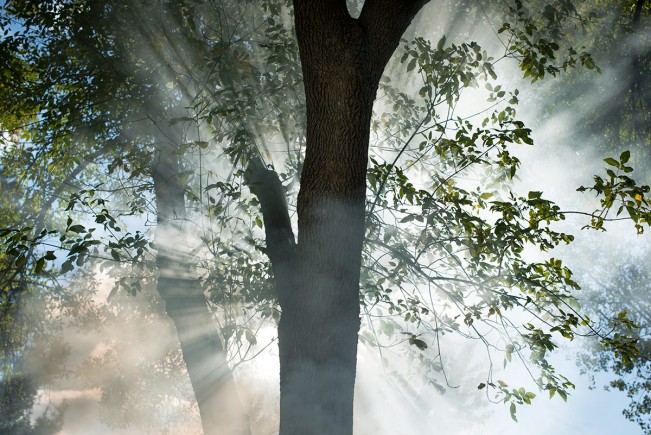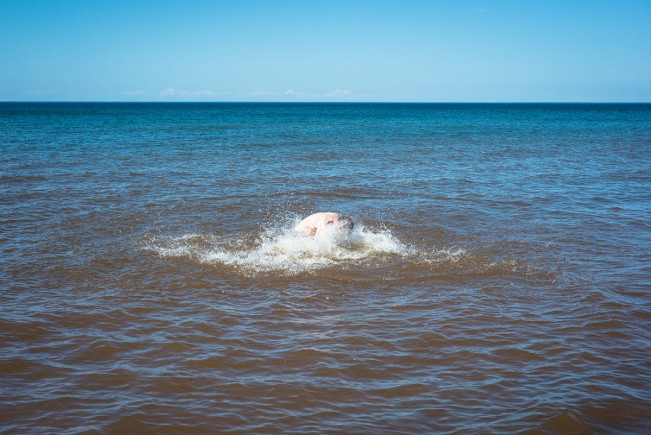On Getting an MFA
Sarah Stankey, long time Lenscratch Editor and writer, recently returned to school to seek her MFA. I asked her to take us along on the journey and write about her experience. Today’s post is her first on the subject. –Aline Smithson
In the beginning, when I first received notice of acceptance to graduate school, I was filled with a splendor of different emotions, mostly crippling fear of suddenly not being able to create work and having the abrupt loss of all my creative senses. Luckily, though, I can say that hasn’t happened. The second realization I had was the bottomless pit of a feeling of knowing my next step would be to secure funding, which becomes different than taking out additional student loans (this becomes more difficult when you already hold a bachelor’s degree), and most of my classmates seem to be avoiding this as well because of the looming undergraduate loans we’ve all accumulated already. These anxieties seem to be constantly with me, but I can’t say that’s specific to being a graduate student, I think it’s more like just being an adult.
For my BFA, I attended the Milwaukee Institute of Art & Design, a four-year fine art school that was tiny (less than 1,000 students total) and focused on creating conceptual, medium specific work, or at least that’s what it was like for me in the photography department. So, for my MFA, I chose a large research university, the University of Wisconsin-Madison, that offers me something completely different than an art school can. I am currently working in the midst of physicists, oncologists, astrologers and philosophers and that kind of interdisciplinary knowledge is incredible and contagious too. In choosing a school to attend, I think this far outweighed making sure I attended the most elite, snobby art school out there. Plus, who the hell can afford to go to those private art schools in the first place? Unless your goal is to have as much debt as a doctor when you finish. Which leads me to one other reason I chose UW-Madison, it’s a three-year program rather than the typical two years and this is because at the end of the second year, everyone has an MA thesis exhibition and receives that degree first. At that same time, there is a “qualifiers” meeting with personally selected professors that decide whether or not you can continue on for a third year to receive an MFA, which then leads to another large solo exhibition during that third year. And of course, with an MFA being a terminal degree (meaning there are no higher degrees after that) I enjoy the idea of also receiving an MA, just in case I feel like going for a PhD.
After eleven weeks, probably the best part of being in grad school so far, (other than having my own studio!) is the fact that my work and my practice has been turned on its head. That could be because out of the eighteen first year MFA students, I am the only photography major, and so I’m constantly being exposed to artists working in other mediums and though I’m still using photography in a lot of ways, it’s far less straightforward than my work has been up to this point. And aside from just my classmates’ work not being photo based, all but one of the professors I’ve been working with utilizing media other than photography in their own practices. The images I’ve included in this post are photographs. I’m currently working on ways to disrupt the expectations of photography through the use of appropriated transparency images from children’s books. I’m currently exploring human intervention in the landscape and playing with ways to physically represent that through the use of man-made objects laid on top of “natural” representations of the wild throughout the state of Wisconsin.
Posts on Lenscratch may not be reproduced without the permission of the Lenscratch staff and the photographer.
Recommended
-
The Next Generation and the Future of PhotographyDecember 31st, 2025
-
Spotlight on the Photographic Arts Council Los AngelesNovember 23rd, 2025
-
100 Years of the Photobooth: Celebrating Vintage Analog PhotoboothsNovember 12th, 2025
-
100 Years of the Photobooth: The Photobooth Technicians ProjectNovember 11th, 2025
-
100 Years of the Photobooth: Rafael Hortala-Vallve: AUTOFOTONovember 10th, 2025






















































